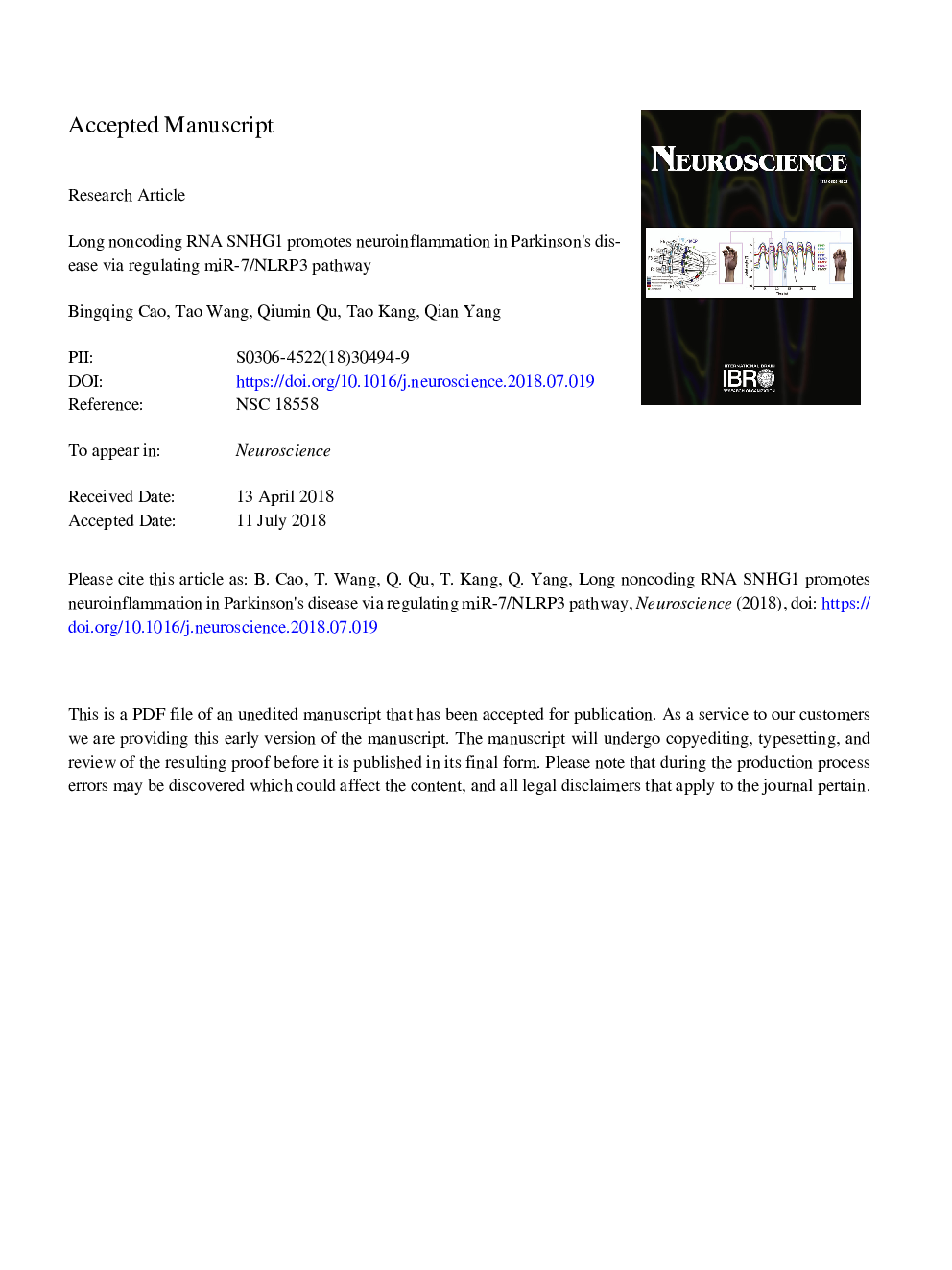| Article ID | Journal | Published Year | Pages | File Type |
|---|---|---|---|---|
| 8840540 | Neuroscience | 2018 | 31 Pages |
Abstract
Parkinson's disease (PD) is the second most common neurodegenerative disorders. Neuroinflammation plays an important role in the pathogenesis of PD. Long noncoding RNA small nucleolar RNA host gene 1 (SNHG1) was elevated in the brain specimens of PD patients and MPP+-treated SH-SY5Y cells. The expression of mouse Snhg1 and miR-7 was firstly determined in lipopolysaccharide (LPS)-induced BV2 cells. The role and mechanism of SNHG1 in the neuroinflammation of PD were investigated using gain- and loss-of function approaches both in vitro and in vivo. Snhg1 expression was elevated, whereas miR-7 reduced in LPS-induced BV2 cells. Upregulation of Snhg1 elevated, and Snhg1 knockdown suppressed LPS-induced BV2 microglial activation and inflammation. miR-7 reversed, while anti-miR-7 further enhanced the effects of Snhg1 on BV2 cells. Furthermore, we found that Snhg1 functioned as a competing endogenous RNA for miR-7 to regulate nod-like receptor protein 3 (NLRP3) expression, leading to the activation of NLRP3 inflammasome. In the microglial culture supernatant transfer model, knockdown of Snhg1 or NLRP3 in LPS-stimulated BV2 cells inhibited primary neurons from apoptosis and elevated caspase-3 activity. Additionally, Snhg1 was increased in MPTP-induced PD mouse models. Downregulation of Snhg1 elevated miR-7 expression, suppressed the activation of microglia and NLRP3 inflammasome as well as dopaminergic neuron loss in the midbrain substantia nigra pars compacta in MPTP-treated mice. In conclusion, our study suggests that SNHG1 promotes neuroinflammation in the pathogenesis of PD via modulating miR-7/NLRP3 pathway.
Keywords
Related Topics
Life Sciences
Neuroscience
Neuroscience (General)
Authors
Bingqing Cao, Tao Wang, Qiumin Qu, Tao Kang, Qian Yang,
